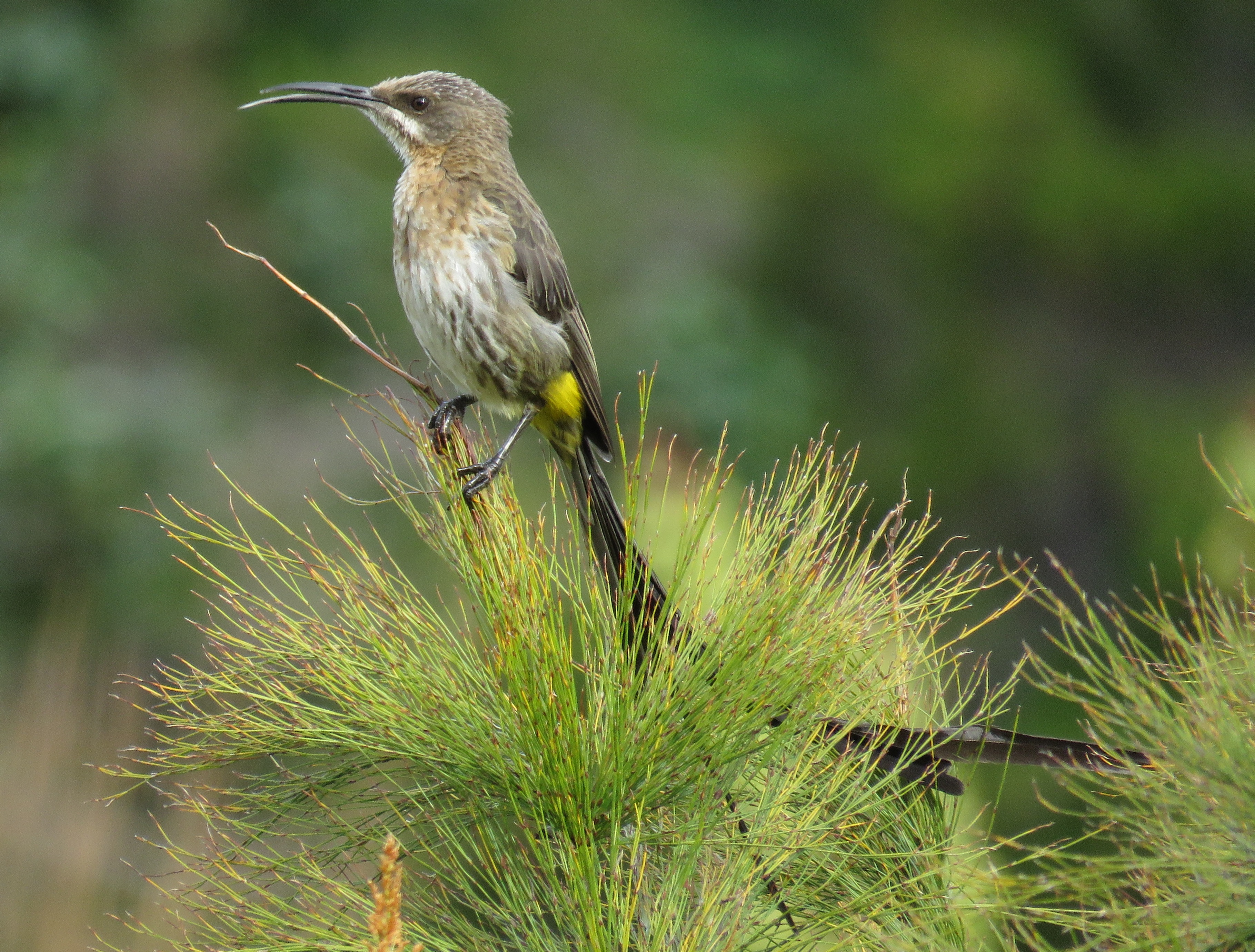|
Promerops
The sugarbirds are a small family (biology), genus, ''Promerops'', and family, Promeropidae, of passerine birds, Endemism, restricted to southern Africa. In general appearance and habits, they resemble large, long-tailed sunbirds or some of the Australian honeyeaters, but are not closely related to the former and are even more distantly related to the latter. They have brownish plumage, the long downcurved bill typical of passerine nectar feeders, and long tail feathers. Taxonomy and systematics The genus ''Promerops'' was introduced by the French zoologist Mathurin Jacques Brisson in 1760 with the Cape sugarbird (''Promerops cafer'') as the type species. The name of the genus combines the Ancient Greek προ ''pro'' "close to" or "similar" and the genus'' Merops (genus), Merops ''that contains the bee-eaters. The relationships of the sugarbirds have been a source of considerable debate. They were first treated as a far-flung member of the honeyeater family, which is otherwise ... [...More Info...] [...Related Items...] OR: [Wikipedia] [Google] [Baidu] |
Gurney's Sugarbird
Gurney's sugarbird (''Promerops gurneyi'') is a medium-sized passerine Endemism, endemic to the mid- and high-altitude grassland Veld, velds in southern Africa. It belongs to the family Sugarbird, Promeropidae, which contains one genus, ''Promerops'', and two species. Gurney's sugarbird feeds on nectar from ''Protea'' bushes as well as on small insects. This bird is characterized by its long, graduated tail and decurved beak. The common name and Latin binomial commemorate the British banker and amateur ornithologist John Henry Gurney (1819-1890). Description Gurney's sugarbird has a long, decurved bill characteristic of Nectarivore, nectarivores. It has a chestnut-coloured forehead, along with a faint white eyestripe and white mustachial stripe. A white throat stands out against the russet breast. This species of sugarbird has a dark grey back, and a conspicuous bright yellow rump makes this bird easy to spot. The tail is long and graduated, ranging from 11 to 19.3 cm in leng ... [...More Info...] [...Related Items...] OR: [Wikipedia] [Google] [Baidu] |
